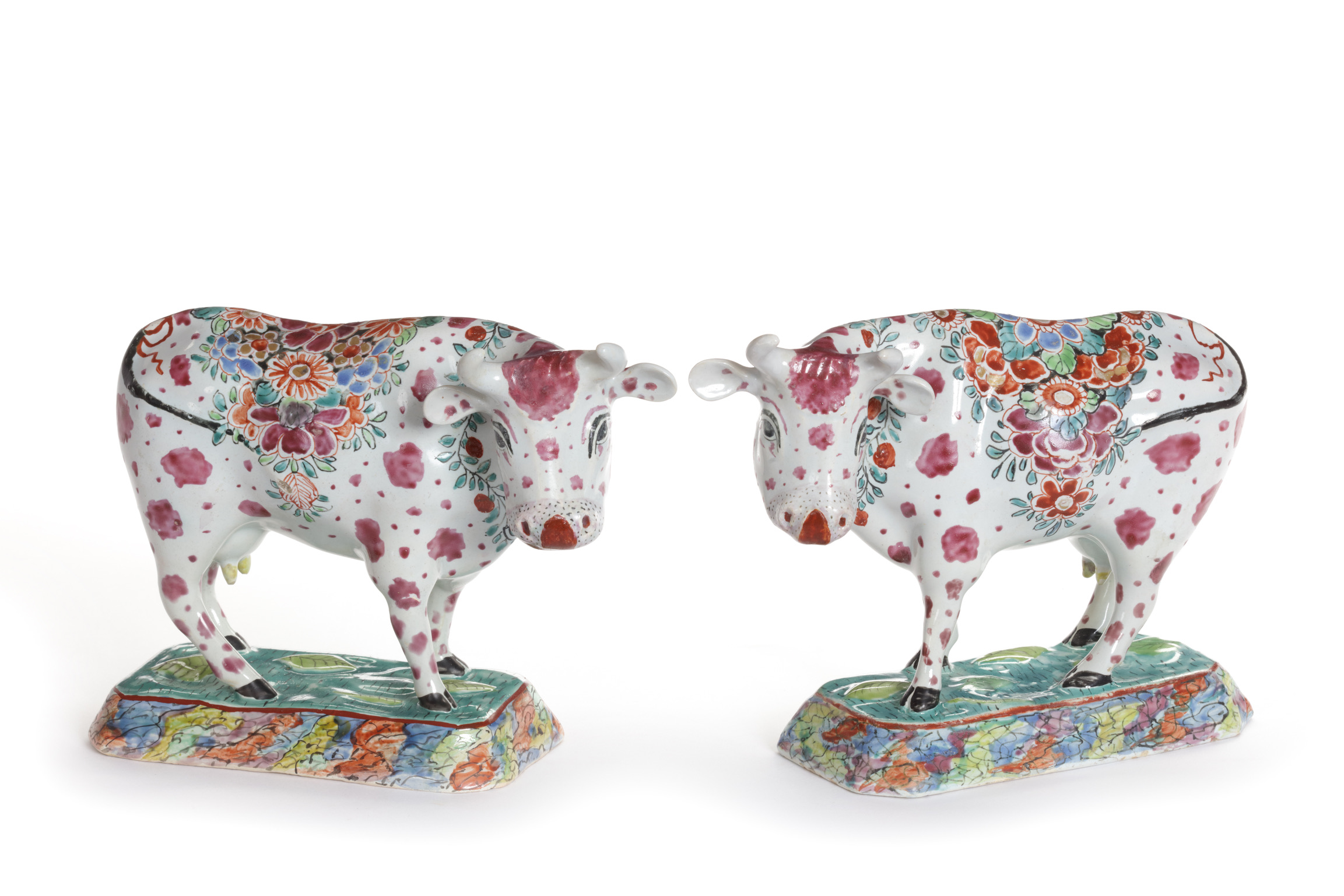![]()
Images on this website are licensed under a
Creative Commons Attribution-NoDerivs 3.0 Unported License.
OBJECT
D2349. Pair of Polychrome Petit Feu and Gilded Models of Cows
Delft, circa 1765
Each cow with a dark rose-spotted hide, ears and forelock, black eyes, spine, tail and hooves and an iron- red lapping tongue, wearing garlands of colorful and gilded flowers around its neck and back, and modeled affronté, standing foursquare midst frogs and leaves on the high rectangular green top, its sides marbleized in iron-red, lilac, green, blue, yellow and black.
DIMENSIONS
Height: 13.5 cm. (5.3 in.)
NOTE
The Delft potters were inspired by a seventeenth- century tradition. Each year the Butcher’s guild in Holland would hold a parade on the day of its patron saint, St. Luke, symbolized by the apocalyptic winged ox. The parade celebrated the guild’s best- bred bull or cow. The prized beast was decorated with floral garlands and ribbons, and gilded horns that were often topped with oranges. The festive, bannered procession was led by drummers and pipers, followed by a singing and dancing chorus of guild members and townspeople. The animal would later be butchered and the meat served at the guild dinner, a portion of it being donated to the church and the local poor. From this tradition emerged the saying, ‘The guild ox is on parade’, which became synonymous with ‘this is a real feast!’ A century later, the guild’s tradition lives on in the imagery of Delftware cows.
A description about a Butcher’s Guild parade in De Volksvermaken (The People’s Pleasures) by Jan ter Gouw in 1871 offers a realistic account of the animals’ decorative flourishes, which are remarkably similar to the imagery on most of the Delftware cows. “The beast was draped with flowers and wreaths and its horns gilded; the drums and pipes came first; the guild banner was blowing in the air, the guild brothers cheerfully marched around it, and the townspeople followed along with humming and singing.” Ter Gouw provides further insight as to why the decorated ox remained an important tradition even in later centuries: “When the parading of the guild-ox was discontinued by the guilds, the butchers themselves kept the tradition alive for a long time. When they had bought an especially large or fat animal, they would garland it with flowers and lead it around the town, accompanied by drums, so that all who saw the ample beast, would order a piece from it; and even though no guild was still related to the custom, the event kept its name because it was associated with something excellent.”
SIMILAR EXAMPLES
A pair of similarly decorated cows with a dark-rose hide is illustrated in Aronson 2012, pp. 88-89, no. 48. Another pair of petit feu and gilded figures of cows is illustrated in Aronson 2004, p. 144, no. 166 and in Aronson 2021, pp. 84-85, no 26









